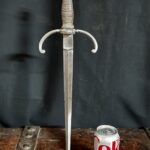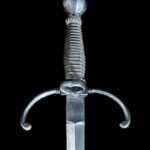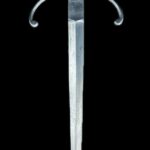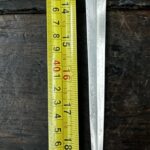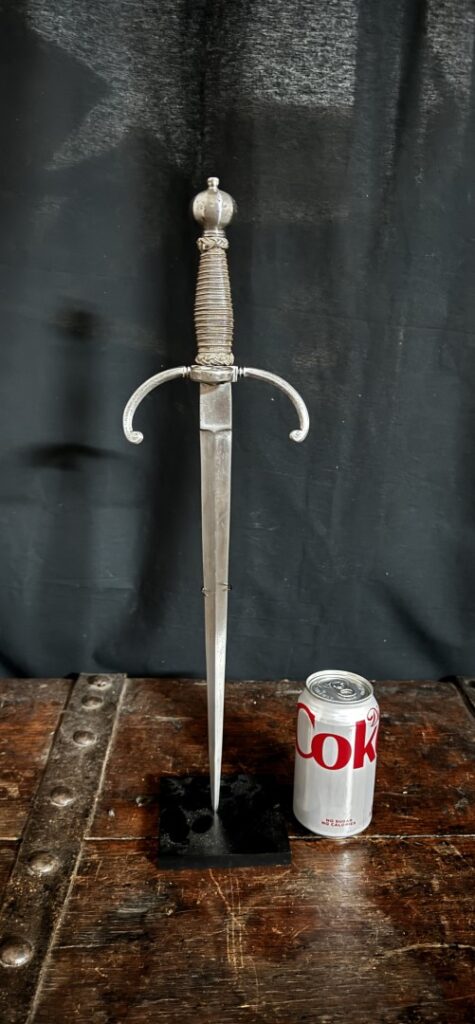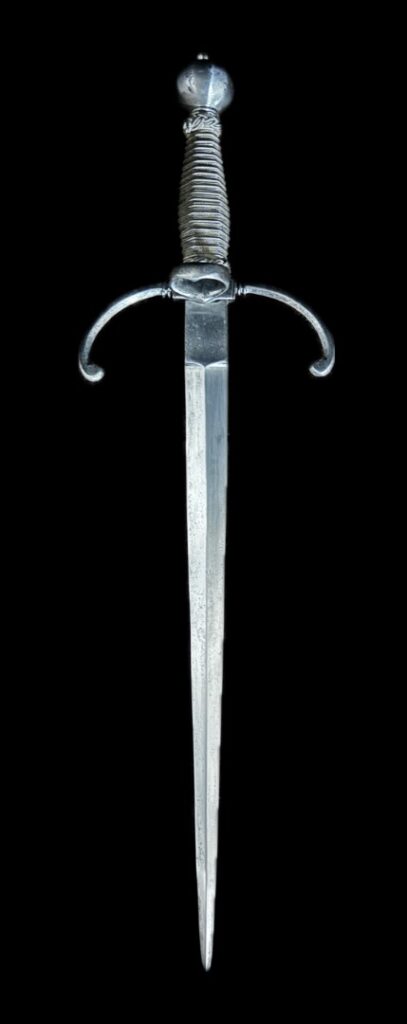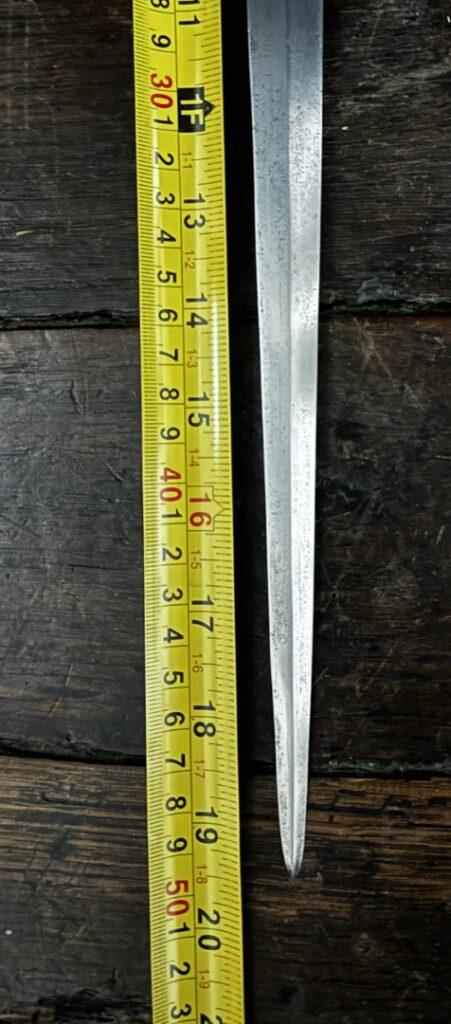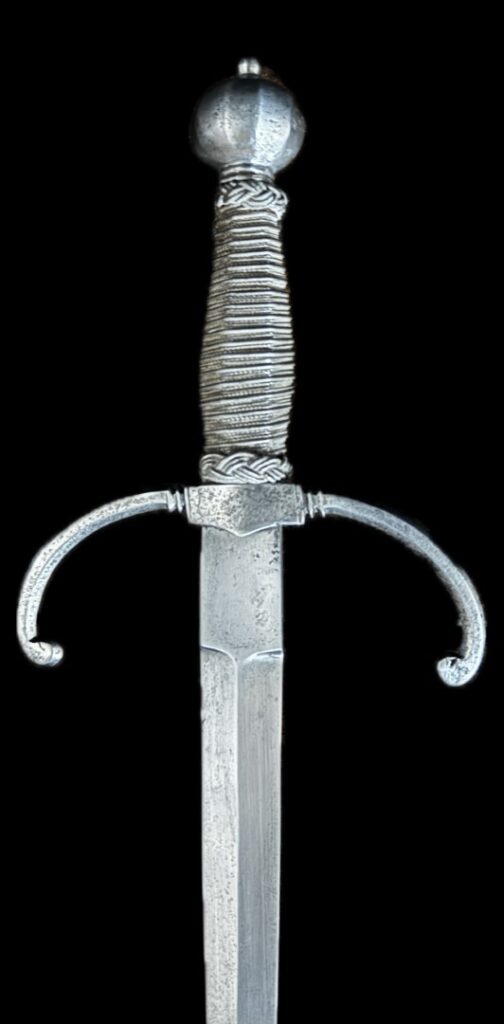1713) A VERY FINE LARGE LEFT-HAND DAGGER OF SUPERB CONSTRUCTION CIRCA 1580: Mint museum condition. This dagger is much more impressive in person than in pictures.
Description: Superbly constructed with an octagonal, spherical pommel with an extended final point, possibly original grip with wire rapping and Turks heads at opposite ends of the grip, long broad blade of stiff diamond-shaped tapering to an acute tip with no pitting, a medial ridge running from the tip to the rectangular quillon block. An iron polygon downward turning guard expanding at the tips into a circular shape, two decorative incised circular lines where the quillon meets the quillon block, side ring with a chevron at the inner center. The dagger is in very good condition.
Total approximate length: 19.5
Provenance: From an old French Collection.
Discussion: Left-hand daggers (a modern term) were essential to the fencing strategy. Left-hand daggers are used in conjunction with the rapier to maximize a combatant’s‚ swordsmanship. The left-hand dagger was used to parry, block, trap, and redirect the opponent‚ sword to create an opening for the rapier to administer the “coup de grace.” However, a good swordsman could also reverse the roles and use the rapier to set up the left-hand dagger for the finishing stroke. In the past, swords were thicker, heavier, and stronger because opponents on the battlefield used armor. Because the rapier and left-hand dagger were a civilian implement of defense with no armor involved, the sword could be much lighter and wielded more effectively with one hand. Left-hand daggers were usually made with three different hilt types:
(1) Cruciform shape: The quillons were horizontal, stout, long, and sometimes swelled at the tips.
(2) Bent downward: In an effort to trap the opponent‚ blade with a simple twist of the wrist, most left-hand daggers had downward-turned quillons. Downward-turned quillons also redirected the opponent‚ blade to create an opening to attack.
(3) Opposite bend: In some less common examples, one quillon was turned downward to trap the opponent‚ blade, and the other quillon bent in the opposite direction (facing upward) to function as a knuckle guard and protect the swordsman‚ hand. A protective ring or shell at the quillon block served the purpose of protecting the hand from a redirected blade that could have slid down and disabled the swordsman‚ hand. The blade tapers to the tip, most with a medial ridge for added strength. Most blades were double-edged and had a ricasso. Some blades were pierced with decorative patterns or cut with intricate indentations (see page 328‚ #15-A in my book). These features were not just for decoration; they served the same purpose as a fuller on a sword. They made the dagger lighter without sacrificing the rigidity or strength of the blade. Contrary to what the Victorians thought, the piercings on the blade were not for poison but simply for decoration. Most rapier’s blade decoration mirrored the decoration of the left-hand dagger blade.
The left-hand dagger lost its appeal after circa 1675, with the exception of Spain, the Spanish Netherlands, and sections of Italy under Spanish control, which still had a very strong tradition of fencing. The left-hand dagger construction reached its zenith circa 1675.
Conclusion: An exceptionally elegant dagger of superb construction that makes a great and impressive addition to any collection.
Priced to sell at under $2.5K for a quick sale!!!*
All my items come with the following:
–Free shipping.
–10-day review period.
–Certificate of Authenticity.
– Free autographed copy of my book if you do not have one.
I believe you will be very….very…. pleased. Act fast. This one should sell quickly!!!*

